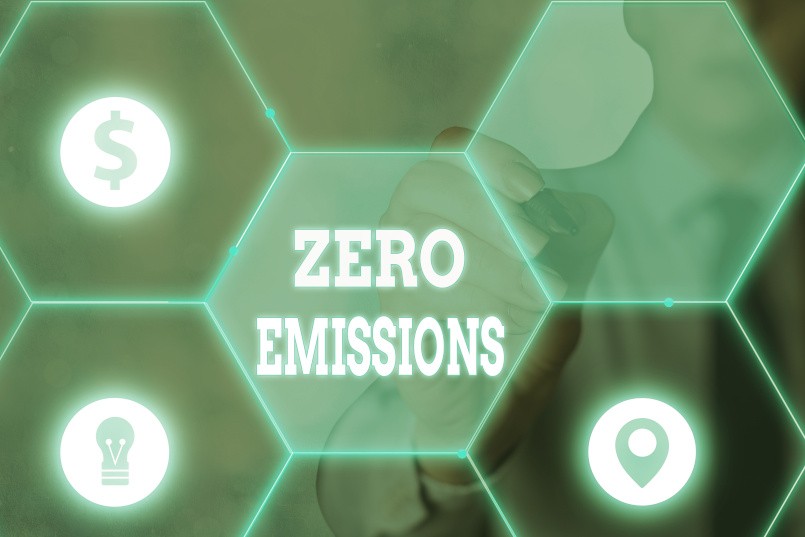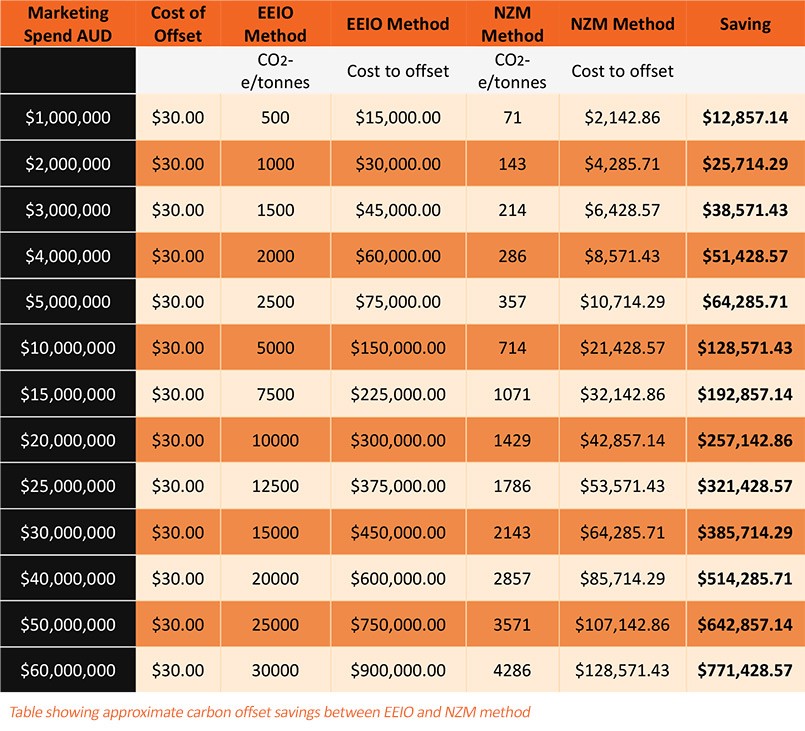In the previous two articles, I explained the language around Net Zero Carbon Emissions and how Corporations are Structuring and Communicating their Net Zero Targets.
This challenging subject has been structured in three parts:
- Explaining the language around Net Zero Carbon Emissions
- How Corporations are Structuring and Communicating their Net Zero Emission Targets
- The Dos and Don’ts of Marketing Activity within Net Zero Emission Targets.
I have already outlined some of the language used around Net Zero Emission Targets and given some useful examples to help you work out your own strategy.
So, let’s finish this series with some tips on the dos, and especially the don’ts and the cost of action or inaction when including any marketing activity within Net Zero Targets.
What Marketers are doing about their Carbon Emissions
Thankfully there is finally some movement on understanding and reducing carbon emissions within the haloed world of marketing.
Until now marketers have chosen to ignore this subject, and therefore failed to be included in their organisation’s sustainability target and reporting conversations. This is a problem as marketing’s Scope 3 emissions, which arise predominately from their external expenditure on promoting their businesses goods and services i.e., advertising, are starting to come under the spotlight.
Advertising and media agencies have been waiting for their clients to demand environmental marketing solutions. Every agency was interested and making appropriate noises but until someone was willing to pay for it there was little effort to lead in this planet-saving arena.
So now every agency is having to play catch up.
What’s the Scale of the Problem?
I will focus on media spend as it is by far the largest budget item and the biggest contributor to carbon emissions in marketing.
Let’s look at some published figures. According to WPP, Group M spends $60 billion p.a. on media placement on behalf of their clients. This would translate to around 3.8 million tonnes of carbon emissions each year (see below for method).
That sounds like a lot and it is, being the equivalent to the emissions from over 800,000 cars running around the roads each year.
What’s Happening in Europe?
If we look at the work being done in the UK, we can get an idea of what’s coming down the track.
Currently, there is a lot of activity from the Advertising Association, IPA, Data & Marketing Association of the UK, and AdGreen, who are working towards the goal of Net Zero emissions by 2030 (you can read the details in that blog).
Calculators are being developed and levies on advertising spend are being proposed. Lots of good intent but in the end, it’s reactive to a business problem that is going to add further cost and therefore business pressure to the agency networks.
The issue is that the advertisers will need to include the emissions from their marketing activity in their Net Zero Emission Targets. Unfortunately, the agencies will be unable to deliver solutions to them that are credible, verifiable, and most importantly invested interest-free around carbon measurement and advice.
The media agencies historically have volume discounts and special arrangements with media outlets that have to date not taken into account the environmental cost. And because a solution that meets the strict rigours of environmental standards will not be available or consistent, the advertisers will measure carbon emissions from marketing spend using a spend analysis method, This is based on environmentally extended input-output tables (EEIO) for marketing in a particular region.
This method is available from the consultants that are already looking at and measuring emissions across the entire business. They have an existing relationship with the advertisers’ sustainability teams and importantly, the C-suite. They are respected and trusted plus they understand the language of carbon emissions and the complexities of Net Zero Targets.
So, carbon emission measurement delivery in this manner is quick and easy to include but this is an existential danger for marketers and agencies alike if this method is used. Let me explain why.
The Problem with using a Cost-Based Macro Method to Measure Carbon Emissions?
There is no problem with the EEIO method especially if you are an offset supplier who wants to sell as many carbon offsets as they can.
It is quick, easy to calculate and a readily acceptable way of adding marketing Scope 3 emissions to the total business carbon emissions benchmark for any future Net Zero Targets.
The business challenge for the company is how to reduce any emissions, and therefore the potential cost of purchasing carbon offsets, to mitigate the carbon, to reach a Net Zero position.
As we discussed in the previous blog posts, companies are setting out strategies to reduce emissions across the manufacturing and working environments by looking at low carbon-emitting power usage options, low carbon transport and general efficiency gains to reduce the overall emission in the business. These are being carried out a micro level to better understand the carbon ‘hotspots’ and implement ways of reducing them.
This will lead to a ‘low as possible’ carbon footprint that will then have to be offset at a cost to achieve Net-Zero.
So far so good, but if marketing is just viewed only at a macro level dollar value, then the only way to reduce emissions from this budgetary item is to reduce it.
Not only will the marketing budget be viewed, as it is today, as a cost of sales, but the ability to minimise the subsequent associated carbon offset costs of this spend will not be able to be reduced, making marketing budget reviews even more challenging in the future.
So, we will have a large section of a business’s carbon offset expenditure that can only be neutralised in two ways.
Firstly, by buying offsets to mitigate these emissions. The second way is the scary one for marketers and their agencies. The emissions can be reduced by reducing the marketing budget and therefore reducing the cost to offset the emissions.
The Solution. Measuring Marketing Carbon Emissions at a Micro level.
Fortunately, we at TrinityP3 have been working with The Gaia Partnership and now Net Zero Media (NZM) on understanding the carbon emissions from all marketing activities for the past 14 years. Yes, it’s complex but the industry-leading tool, The CO2counter, enables both advertisers and agencies to challenge the existing value-based EEIO methodology by understanding where the carbon emission hotspots are occurring in the media and marketing landscape.
Much more important than just measuring, independent guidance is available to help reduce these emissions without affecting the overall strategic media requirements. In comparison, in live examples, this micro-level approach to calculating marketing carbon emissions delivers a factor of approximately 7 times fewer carbon emissions than the macro EEIO method based solely on spending that is currently being used by consultants/auditors.
The Micro-Level Approach Addresses a Number of Looming Issues
Firstly, we arrive at a lower figure for marketing’s scope 3 carbon emissions than the EEIO method which for ‘Marketing and Distribution’ the EEIO is currently around 0.5kgCO2-e / $ in Australia.
For every $1,000,000 of marketing spend the EEIO method would calculate 500 tonnes of carbon. This would cost $15,000 AUD to offset (at $30 per tonne).
Using the CO2counter micro calculation this would be more within a range of 75 tonnes or $2250 to offset.
A saving of $12,500 per $1,000,000 of marketing spend.
The following table demonstrates the potential savings/cost of both methods.
Remember, both these methods only look at the cost of doing nothing except offsetting the emission. But this is not the point of a Net Zero Target. The idea is to understand then reduce these emissions as much as you can before you take the final step of offsetting.
You need to ask yourself this question. Is a powerful industry body like the media going to ignore all the financial incentives they currently enjoy and give fearless and independent advice on reducing carbon emissions in the media planning?
A micro view of historic planned and brought media schedules allows marketers and their agency partners to better understand what is good, bad, or indifferent in the media landscape. Then by adjusting the mix of media channels they can reduce the overall carbon footprint. Otherwise, the only way they can reduce emissions is to cut the budget.
What Should you do Next?
Over the course of these three articles, I’ve only managed to scratch the surface of a large and complex subject.
In summary, we have spoken about the definition of Net Zero Carbon Emissions and what guidelines are in place to help capture and then claim this goal. For further reading on how to get started have a look at an excellent article from Sinai Technologies.
Then we gave examples of what corporations are claiming and how difficult it is to make a Net Zero claim reflect the true nature of a company’s business operation.
Finally, in this article, we have given marketers a warning of the perils of just waiting for the ‘knock on the door’ to discuss marketing’s inclusion in the future Net Zero targets.
Marketing spend will be included in Net Zero Carbon Emission targets, so you have a choice.
Sit on the sideline and let the external environmental consultants use their EEIO method for the marketing division of the business or you can contact TrinityP3 today and ask us about conducting an environmental mapping exercise to see what steps you need to start putting into place, in context of the unique requirements present in your business.
Is your marketing strategy aligned to your company’s sustainability policy? Do you measure and optimise your carbon emissions? Find out how we can help





